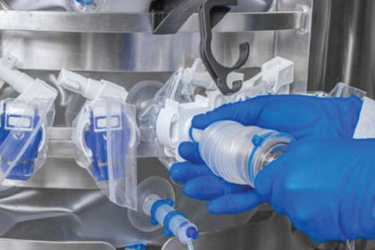Bridging The Connectivity Gap Between Traditional Sensors And Single-Use Systems
By Julie Stiller, Application Development Manager, David Koechlein, Application Development Manager, and Derek Pendlebury, Global Sales Director, Colder Products Company

Critical process parameters (CPPs) are the key variables in the pharmaceutical manufacturing process that are most likely to affect the quality attributes of a biological product. CPPs must be monitored and controlled throughout the various stages of production. For example, in the production of recombinant proteins, the cell culture expansion and production steps require continuous real-time monitoring and control. Any deviations in CPPs from the historical data gathered during the process development steps could negatively impact cell growth and, therefore, product yield. They can also potentially affect the drug’s overall safety and efficacy. The most common CPPs measured are pH, dissolved oxygen, capacitance, and biomass. Another example is in media or buffer preparation, where conductivity is used to measure and maintain the ionic strength of the solutions.
Sensors that measure pH, DO, capacitance, and biomass are traditionally made of glass or steel so that the sensor can be readily steamed in place when used in stainless steel bioreactors. When used in single-use (SU) bioreactors, the same sensors are sterilized by autoclaving inside of a closed system that is designed to attach to and insert the sensor into the singleuse bioreactor without compromising the sterility of the sensor or the bioreactor (as shown in Figures 1 and 2). When used in single-use systems (SUS), conventional sensors come in many lengths. Traditionally, a sensor with a 12mm outer diameter (OD) is selected because the sensor conveniently fits within a standard ½-inch hose barb face port on the SUS. The widespread acceptance and adoption of single-use technology (SUT) across the industry has also driven increased demand for supporting equipment, such as SU sensors. While SU sensors offer all the benefits of SUT, their shortcomings have slowed adoption and impacted overall confidence in their performance.
Get unlimited access to:
Enter your credentials below to log in. Not yet a member of Pharmaceutical Online? Subscribe today.
